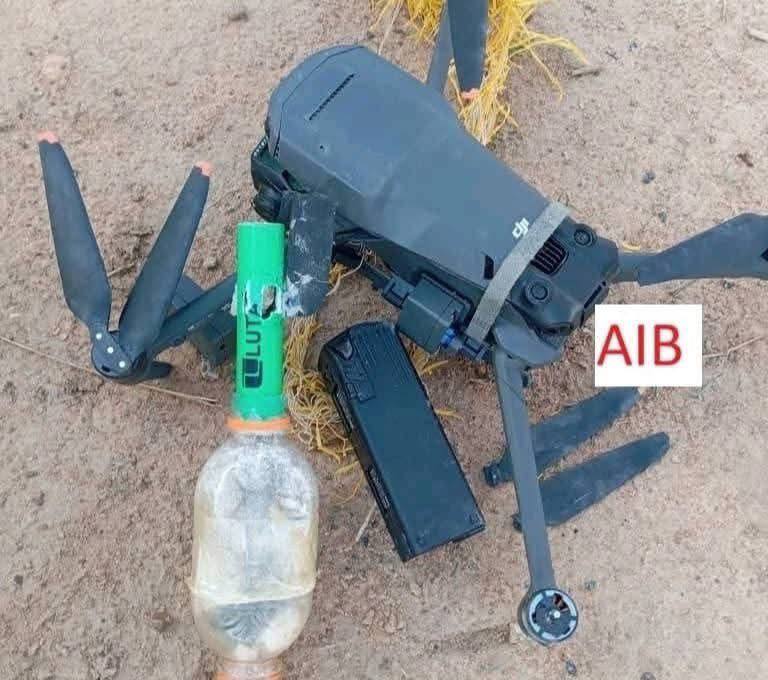Ouagadougou, Burkina Faso – Recent images published by media outlets have exposed the growing threat of unmanned aerial vehicles (UAVs) being used by terrorist groups to target Burkina Faso’s Armed Forces. The photographs reveal that militants are deploying modified commercial drones, equipped to drop improvised explosive devices (IEDs), in a concerning escalation of asymmetric warfare tactics.
Drone Specifications and Modifications




The images indicate that the drones being used are commercially available models, likely Chinese-made DJI Mavic or Phantom series drones, which are popular for their affordability, portability, and ease of use. These drones typically have:
- Flight Range: 5–10 km (3–6 miles)
- Payload Capacity: 1–2 kg (2.2–4.4 lbs)
- Battery Life: 20–30 minutes per charge
- Camera Quality: 4K resolution with real-time transmission
The modifications include:
- Custom payload release mechanisms to drop IEDs
- Extended battery packs for longer flight times
- GPS spoofing or jamming countermeasures to evade detection
Explosives Used in Attacks
The IEDs deployed by these drones appear to be:
- Fragmentation grenades or homemade pipe bombs
- Small-scale mortar rounds repurposed for aerial drops
- Pressure-plate or remote-detonated explosives
These devices, while crude, can cause significant damage to personnel and light vehicles, making them a persistent threat to military outposts and convoys.
Security Implications
The use of commercial drones by militants highlights a worrying trend across the Sahel region, where non-state armed groups are increasingly adopting low-cost, high-impact technologies. Burkina Faso’s military has previously reported drone sightings near strategic locations, but the publication of these images confirms their operational use in attacks.
Countermeasures, such as electronic jamming systems and anti-drone rifles, are being deployed by security forces, but the widespread availability of commercial drones makes complete prevention difficult.
Regional and International Response
Experts warn that without coordinated regional action, drone warfare could become a staple of insurgent tactics in West Africa. Neighboring countries such as Mali and Niger have also faced similar threats, prompting discussions on joint counterterrorism strategies involving:
- Drone detection networks
- Stricter regulation of commercial UAV sales
- Enhanced air defense systems
Conclusion
As Burkina Faso continues to battle militant groups, the adaptation of commercial drones for warfare presents a new challenge. The government and its international partners must invest in advanced counter-drone technologies to mitigate this evolving threat.

Leave a Reply